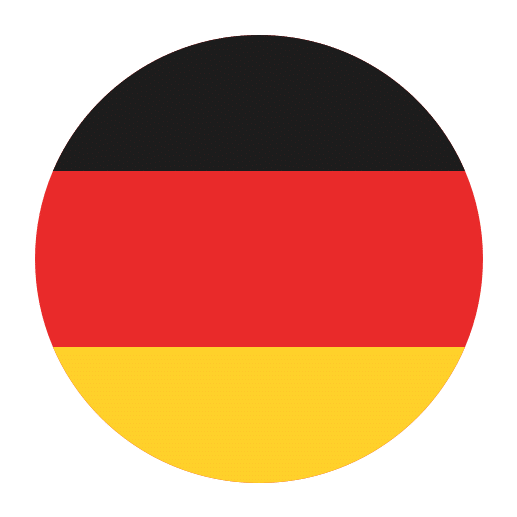Learning a new language can be a daunting task, but with the right tools, it can become an enjoyable and enriching experience. For English speakers aiming to master German, the plethora of available learning apps can make the process more accessible and engaging. These apps leverage modern technology to offer a range of features that cater to different learning styles and levels. This article will delve into the essential features of top German learning apps, helping you choose the best one to suit your needs.
Interactive Lessons
One of the standout features of top German learning apps is their interactive lessons. Unlike traditional textbooks, these apps use multimedia elements such as audio, video, and interactive quizzes to make learning more dynamic. Interactive lessons help to keep learners engaged and can accommodate various learning styles.
For instance, Duolingo, a popular language learning app, uses gamified lessons that reward learners with points and badges for completing exercises. This not only makes learning fun but also provides a sense of accomplishment that can motivate users to continue their studies.
Audio and Pronunciation Guides
Accurate pronunciation is crucial when learning a new language, and top German learning apps provide robust audio guides to help with this. These guides often include native speaker recordings, allowing learners to hear how words and phrases are pronounced correctly. Some apps, like Babbel, even offer speech recognition technology to give users instant feedback on their pronunciation.
Example: Babbel’s speech recognition feature allows you to practice speaking into your device. The app then analyzes your pronunciation and offers feedback, helping you improve your speaking skills over time.
Vocabulary Building
A strong vocabulary is the backbone of language proficiency. Top German learning apps employ various strategies to help users build and retain a robust vocabulary. These strategies include spaced repetition systems (SRS), flashcards, and thematic word lists.
Spaced Repetition Systems
Spaced repetition is a proven method for enhancing long-term memory retention. Apps like Anki and Memrise use SRS to help learners review words and phrases at optimal intervals, ensuring that they are moved from short-term to long-term memory.
Example: Anki allows users to create custom flashcards and schedules review sessions based on the learner’s performance. Words that are more difficult for the user appear more frequently, while easier words are reviewed less often.
Thematic Word Lists
Thematic word lists group vocabulary by topics such as food, travel, or business, making it easier for learners to focus on specific areas of interest or need. Apps like Rosetta Stone and FluentU offer thematic lessons that integrate vocabulary into real-life contexts, enhancing both comprehension and retention.
Example: Rosetta Stone’s lessons often begin with a thematic introduction, such as “At the Restaurant,” where learners are introduced to vocabulary and phrases relevant to dining out. This contextual approach helps learners see how words are used in everyday situations.
Grammar and Syntax
Grammar and syntax are fundamental components of language learning. Top German learning apps provide comprehensive grammar explanations and practice exercises to help users understand the rules and structures of the language.
Detailed Explanations
Apps like Lingodeer and Clozemaster offer detailed grammar explanations that cover everything from basic sentence structure to more complex grammatical rules. These explanations are often accompanied by examples and practice exercises to reinforce learning.
Example: Lingodeer’s lessons include in-depth grammar notes that explain the rules behind sentence construction, verb conjugation, and noun cases. These notes are followed by interactive exercises to test your understanding.
Practice Exercises
Practice makes perfect, and top German learning apps provide a variety of exercises to help users apply what they have learned. These exercises range from multiple-choice questions to fill-in-the-blank activities, ensuring that learners can practice grammar in different contexts.
Example: Clozemaster uses a cloze test format, where learners fill in the missing word in a sentence. This format helps users practice grammar and vocabulary in context, enhancing their overall language proficiency.
Cultural Context
Understanding a language involves more than just mastering its vocabulary and grammar; it also requires an appreciation of the culture. Top German learning apps incorporate cultural context into their lessons, helping users gain a deeper understanding of the language.
Cultural Insights
Apps like Busuu and Mondly offer cultural insights that provide background information on German customs, traditions, and social norms. These insights help learners understand the cultural nuances that influence language use.
Example: Busuu’s lessons include cultural notes that explain the context behind certain phrases and expressions. For example, a lesson on greetings might include information on how Germans typically greet each other in different social situations.
Real-Life Scenarios
Incorporating real-life scenarios into language lessons helps learners see how the language is used in everyday situations. Apps like FluentU use authentic content such as videos, news articles, and conversations to immerse learners in the language and culture.
Example: FluentU offers a library of German-language videos, including movie clips, music videos, and news segments. These videos come with interactive subtitles and quizzes, allowing learners to practice listening and comprehension in real-world contexts.
Progress Tracking
Tracking progress is essential for staying motivated and identifying areas for improvement. Top German learning apps offer robust progress tracking features that help users monitor their learning journey.
Performance Metrics
Performance metrics provide learners with detailed insights into their strengths and weaknesses. Apps like Duolingo and Babbel offer performance dashboards that display metrics such as accuracy, fluency, and vocabulary growth.
Example: Duolingo’s performance dashboard shows users their daily streak, total XP (experience points), and skill levels. This information helps learners stay motivated and set goals for their language study.
Personalized Feedback
Personalized feedback helps learners understand their mistakes and make targeted improvements. Apps like Babbel and Rosetta Stone offer personalized feedback based on users’ performance in exercises and quizzes.
Example: Babbel’s personalized feedback feature highlights errors in grammar and pronunciation, providing explanations and tips for improvement. This targeted feedback helps learners address specific areas of difficulty.
Flexibility and Accessibility
Flexibility and accessibility are key factors in choosing a language learning app. Top German learning apps offer features that accommodate different schedules and learning preferences.
Offline Access
Offline access allows learners to study without an internet connection, making it easier to fit language practice into a busy schedule. Apps like Lingodeer and Babbel offer offline access to lessons and exercises, ensuring that users can learn anytime, anywhere.
Example: Lingodeer allows users to download lessons for offline use. This feature is particularly useful for travelers or individuals with limited internet access.
Customizable Learning Paths
Customizable learning paths let users tailor their study plans to their specific goals and interests. Apps like Mondly and Busuu offer personalized learning paths based on users’ proficiency levels and learning objectives.
Example: Mondly’s personalized learning path adapts to the user’s progress and preferences, offering customized lessons and practice activities. This flexibility ensures that learners can focus on areas that are most relevant to their goals.
Community and Social Features
Learning a language is often more effective and enjoyable when done in a community. Top German learning apps offer social features that allow users to connect with other learners, share progress, and practice together.
Language Exchange
Language exchange features enable users to practice with native speakers and other learners. Apps like Tandem and HelloTalk facilitate language exchange by connecting users with conversation partners from around the world.
Example: Tandem matches users with native German speakers who are learning English. This mutual exchange allows both parties to practice their target languages and gain cultural insights.
Discussion Forums
Discussion forums provide a platform for learners to ask questions, share tips, and discuss language-related topics. Apps like Duolingo and Busuu offer forums where users can engage with the community and seek support.
Example: Duolingo’s discussion forums cover a wide range of topics, from grammar and vocabulary to cultural insights. Users can post questions, offer answers, and participate in discussions, creating a supportive learning environment.
Cost and Value
While many language learning apps offer free versions, premium subscriptions often provide additional features and content. It’s important to consider the cost and value of an app when making a decision.
Free vs. Premium
Free versions of language learning apps typically offer basic lessons and features, while premium subscriptions unlock advanced content, personalized feedback, and offline access. Apps like Duolingo and Memrise offer both free and premium versions, allowing users to choose the level of access that suits their needs.
Example: Duolingo’s free version provides access to its core lessons and practice activities. The premium subscription, Duolingo Plus, offers additional features such as offline access, ad-free learning, and progress tracking.
Trial Periods and Discounts
Many language learning apps offer trial periods and discounts to help users evaluate their services before committing to a subscription. Apps like Babbel and Rosetta Stone offer free trials and promotional discounts, making it easier for users to assess the app’s value.
Example: Babbel offers a 7-day free trial that allows users to explore its full range of lessons and features. This trial period helps users determine whether the app meets their learning needs and goals.
Conclusion
In the digital age, learning German has become more accessible and engaging thanks to a wide range of language learning apps. The top German learning apps offer features such as interactive lessons, audio and pronunciation guides, vocabulary building tools, grammar and syntax practice, cultural context, progress tracking, flexibility, community support, and value for money.
When choosing a German learning app, consider your learning style, goals, and preferences. Whether you’re a beginner looking to build a solid foundation or an advanced learner aiming to perfect your skills, there’s an app out there that can help you achieve your language learning objectives.
By leveraging the features of top German learning apps, you can embark on a rewarding language learning journey that enhances your communication skills, cultural understanding, and overall proficiency in German. Happy learning!

